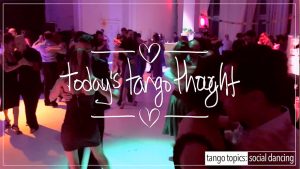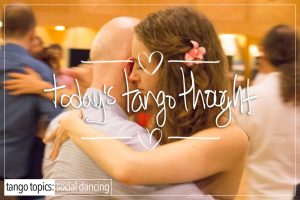Learning to speak and write in Spanish can be lots of fun. Doing so can really force you to understand that your own language is really wacky, that it is full of colloquial phrases that when translated is a literal mess of confusion, and furthermore forces you to really start looking at your own culture and choices. However when it comes to Argentine Tango, and ultimately going to Buenos Aires, the question comes up … “Do you really need to learn to speak Spanish ?”.
First and foremost the version of Spanish that is spoken in Buenos Aires is not necessarily Traditional Spanish, it’s a variation (an unrecognized variation – a dialect) of Spanish called ‘Castellano’. The primary difference between what you think of as Traditional Spanish and Castellano are two sounds that don’t necessarily happen in Traditional Spanish. The first is the “shh” sound which is used in place of a “y”. So the word “I”, in Traditional Spanish is “Yo”, would be pronounced “Show”. The second sound is a ‘juh’ or ‘j’ as in the word ‘jay’. In Traditional Spanish you’ll see this represented as a double ‘ll’, and it sounds like a ‘y’ as in the word ‘yes’. However in Castellano it sounds a little different. Take for instance the word Castellano, it would be pronounced “Cas-TE-Yan-oh” in Traditional Spanish. However in Buenos Aires it would be pronounced “Cas-TE-Jah-no”.
Secondly, what separates Castellano from Traditional Spanish is its pronunciation! Traditional Spanish varies wildly from country to country. However two versions of it are very ‘clean’, and that would be Panama/Costa Rica, and then Colombia. These versions of Spanish are spoken more ‘cleanly’ or closely to what one thinks of as Spanish without an accent. Castellano on the other hand sounds more like ‘Italian’ in its pronunciation more than anything else. It’s very ‘musical’, almost sing-songy. It has a unique cadence that can only be found in Buenos Aires. It’s a very soft romance language on every level. There’s nothing guttural sounding about it. It almost has a lyrical quality to it. Almost. At the same time you can’t really talk about Castellano without mentioning ‘Lunfardo’ which is the slang version of Castellano, more on that later.
Two primary characteristics of Castellano where it differs from Traditional Spanish would be the usage of Vos/Sos and Tu/Eres/Usted (2nd person singular). The usage of VOS instead of TU is very informal whereas TU/Usted is formal. Vos makes you sound casual, whereas TU/Usted makes you sound very formal.
That said, now we answer the question posed above, the answer is a qualified ‘yes’ and ‘no’.
The ‘No’ part. From a Dancing Argentine Tango perspective you don’t really need to understand the native language that the dance is built upon. It’s not going to help you to understand an Ocho any better. Really it’s not. Understanding Castellano is not going to change your ability to learn X. It’s just not. Truthfully the dance is taught in so many languages at this point that it’s should not be a surprise at all. The reality is that Tango is taught in the native language of the dance teacher and then made clear in that language. Usually English is used a secondary language for clarity. Usually. Quite honestly you could (and the author has) go from country to country and continent to continent and never learn Castellano, with the only language you need to speak being that of a Cabeceo/Mirada and then of course (Por supuesto) Argentine Tango.
The ‘Yes’ part. Yup, you absolutely do for a variety of reasons, in no particular order. 1.) It’s a sign of respect to the Native speaker and the culture that Tango comes from! 2.) Reading lyrics can be a bit more clear, and the meanings of songs made even more clear if you understand what’s being sung! However there’s a caveat to that, because the lyrics are a mixture of ‘Lunfardo’ and Castellano and that is a whole different ball of wax in and of itself. But understanding Castellano will help to a certain extent. 3.) Being in Buenos Aires and understanding the native language while you’re dancing with X or asking for a dance (sans Cabeceo/Mirada), or chatting in between the songs with someone, or studying with Y. and lastly 4.) Being able to navigate around the city with a Cab driver or getting on and off a Colectivo, or to speak to a service person while ordering something is absolutely crucial instead of pointing at something and waving your arms around!
To be fair learning Castellano is going to be a plus all the way around for you, there’s no downside to it. So, there’s no reason for you not to start today. A simple one to start you on your way: Change your facebook page from your native language to Spanish! That’s an eye opener! Another is by downloading the Duolingo App (ios/android) which turns learning the basics of Spanish into a very fun and engaging game that will keep you busy for hours and hours, all the while you’re learning the foundations of Spanish (for free). And if you want to go a little deeper, and really brush up your Spanish – 1.) Listen to Argentine Radio (Live) there are multiple sources online. 2.) Bueno Entonces is a good start too. 3.) An online tutor. There are tons of those. Ask around, you’ll find one.
Trust that these simple things go a long way towards you not being seen as just another Gringo/a who’s playing tango tourista and instead seen as a “Che” (sort of).











